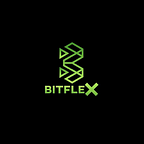BitFlex FinTech® X Polygon (Matic) #CryptoForAfrica — Zimbabwe | Ethereum’s Internet of Blockchains
Polygon partners with BitFlex FinTech® to improve access to digital assets to the Zimbabwean Market and the rest of Africa.
BitFlex FinTech® is pleased to announce a strategic partnership with Polygon (Matic) which will focus on improving access to digital assets in Zimbabwe and the rest of Africa. Polygon was designed to make transactions on the Ethereum blockchain faster and cheaper.
Anyone who has recently used #Ethereum understands how critical this is. It is by far the most popular location for decentralized applications, but its popularity has resulted in significant congestion. Users frequently complain about how long transactions take and high fees. Polygon has attracted a large number of buyers due to its potential applications. It is currently ranked among the top 20 cryptocurrencies in terms of market capitalization.
About Polygon
Polygon, formerly known as the Matic Network, was founded in India in 2017. It was created by seasoned Ethereum engineers Jaynti Kanani, Sandeep Nailwal, Anurag Arjun, and Mihailo Bjelic.
The Matic Network went online in 2020 and has attracted some of the biggest names in decentralized finance, often known as DeFi, such as MakerDAO and Decentraland. In February 2021, the Matic Network was renamed Polygon.
The Polygon team raised the equivalent of $5.6 million in ETH in its April 2019 first offering by selling 1.9 billion MATIC tokens during a 20-day period.
What is Polygon?
MATIC is an Ethereum token that drives the Polygon Network as an Ethereum scaling solution. Polygon intends to use Layer 2 sidechains, which are blockchains that operate alongside the Ethereum main chain, to offer quicker and cheaper transactions on Ethereum. Users may deposit Ethereum tokens into a Polygon smart contract, interact with them within Polygon, and then withdraw their funds back to the Ethereum main chain. The MATIC coin pays transaction fees and participates in proof-of-stake consensus.
As a scaling solution, it attempts to provide a variety of tools to enhance the speed, lower the cost, and simplify transactions on blockchain networks.
At the heart of Polygon’s concept is Ethereum, a platform that houses a variety of decentralized apps, including those that allow you to join virtual worlds, play games, buy art, and participate in a variety of financial activities. However, the amount of activity on Ethereum’s blockchain has rendered it nearly useless, since transmission costs are growing and traffic is being congested.
Polygon wishes to assist Ethereum in growing in size, security, efficiency, and utility, as well as to encourage developers to bring appealing products to market as soon as possible.Consider Polygon to be a layer-2 network, which means it is an add-on layer to Ethereum that does not attempt to alter the original blockchain layer.
Polygon kept its MATIC cryptocurrency, the digital coin that powers the network, after the renaming. MATIC is utilized as a payment and settlement unit amongst network participants.
How it works
Consider Polygon to be a subway express train; it follows the same route as the ordinary train, but with fewer stops and so goes considerably quicker. (The main Ethereum blockchain represents the local railway in this instance.) Polygon has a proof-of-stake consensus process to generate new MATIC and protect the network, which implies that staking is one way you may make money on MATIC you own.
- Validators do the heavy lifting — they verify new transactions and add them to the blockchain. In exchange, they may receive a cut of fees and newly created MATIC. Becoming a validator is a commitment that requires running a full-time node (or computer) and staking your own MATIC. If you make an error or act maliciously (or even if your internet connection is glitchy) you could lose some of your staked MATIC.
- Delegators stake their MATIC indirectly via a trusted validator. This is a much lower-commitment version of staking. But it still requires research — if the validator you pick acts maliciously or makes errors you could lose some or all of your staked MATIC.
Be Cognizant
The Polygon network allows you to do many of the same things as the main Ethereum network, but for a fraction of the cost. You can experiment with decentralized exchanges such as Mobius, QuikSwap, or SushiSwap, yield-generating lending and savings protocols such as Aave, NFT markets such as OpenSea, or even “no-loss prize games” such as Pooltogether.
To transact on the Polygon network, you need to send some crypto to a compatible crypto wallet like Celo Extension Wallet (CEW) or Metamask.
With Celo’s Optics Bridge now live (experimental), users can then “bridge” crypto assets from Polygon to the Celo network.
You’ll also need to bridge some MATIC to make transactions, but even a dollar’s worth is plenty because fees are INCREDIBLY LOW.
The price increased by over 13,000% to start the year
Polygon holders have seen massive gains this year. In January, a single Polygon (MATIC) token was worth a little under $0.02. On May 18, 2021, the value had gone up to $2.68, an increase of over 13,000%.The crypto market in general has cooled off since then, and Polygon’s price right now (at the time of writing) is about $1.23. It shows how volatile this cryptocurrency is, as well as how profitable it can be.
ALL IN ALL
STAY SAFE in the crypto space DYOR (Do Your Own Research) and BACK UP your wallets
